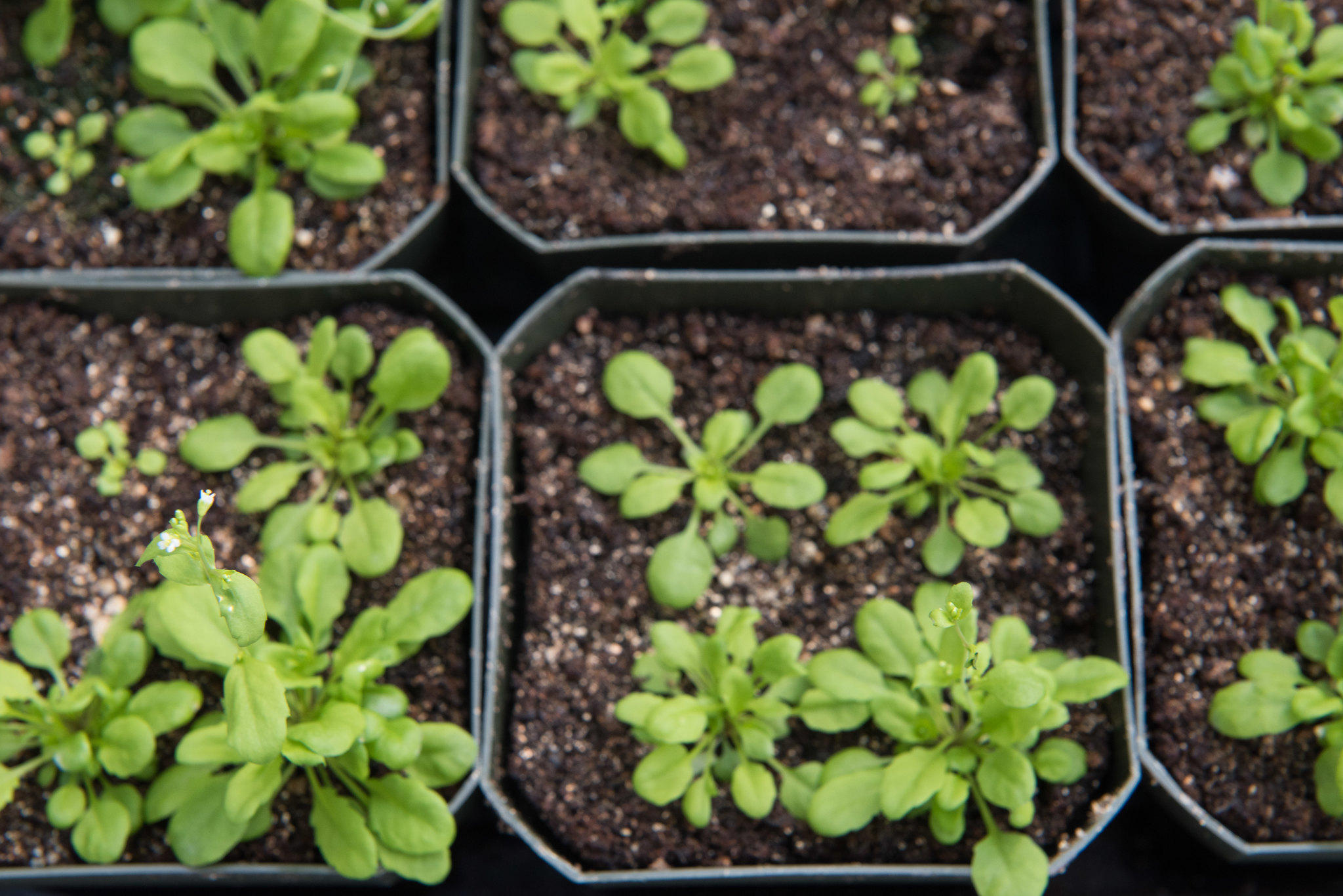Published on

By Josie Heimsoth and Cara Penquite | Bond LSC
David Mendoza unflinchingly faces the “black box” of plant science everyday, asking the question, ‘how do plants know if they don’t have enough nutrients?’
Mendoza’s study of micronutrients — elements vital to plant health and energy but only present in small quantities — led him to iron and a collaboration with Ron Mittler on a $1.2 million grant. The grant was awarded by the National Science Foundation in October 2022 to advance the understanding of autonomous leaf-specific iron deficiency responses.
“For iron, the window between being a nutrient and being a very toxic element is really narrow,” said Mendoza, a Bond LSC researcher and associate professor of plant sciences. “So, of course, to me that’s fascinating, right? How something can be so important for life, yet so dangerous that can kill the plant.”
Iron plays a key role in photosynthesis, giving plants energy. Plants sense if they are running low on it and other micronutrients like manganese and zinc in the leaves, which send signals to the roots and the rest of the plant. In response to those yet unknown signals, the roots start taking in more nutrients from the soil.
Mendoza worked with Mittler, fellow Bond LSC researcher and professor of plant sciences, to uncover how plants sense and respond to iron deficiency. Mittler’s research focuses on the role of reactive oxygen species (ROS) in the regulation of different biological processes, including regulation of iron metabolism.
ROS were once thought to primarily be destructive molecules of destruction because of their tendency to react and break down other molecules but have since been recognized as essential regulators of cellular and systemic signals in plants as well as animals. Additionally, they play an important role in hormonal, physiological, and developmental reactions in plants such as growth and development, defense and acclimation to environmental stress.
The partnership started when Sarah Zandalinas, a former postdoctoral researcher from the Mittler lab, found a protein that causes an iron deficiency response in plants. Communication of these discoveries between the Mendoza and Mittler’s lab led to a more formal collaborative research that included Sam McInturf, a former postdoctoral fellow in the Mendoza lab.
“Very interestingly, Sarah found that mutants of this protein in Arabidopsis — the plant that we work with — plays a [role in] iron deficiency responses,” Mendoza said.
Zandalinas’ protein, called NEET, sparked Mendoza’s interest because a mutation in NEET causes the plant to act like it doesn’t have enough iron even when it actually does. A mutation in NEET triggers a partial iron deficiency response.
“I started to work with NEET proteins in plants way before I came to Mizzou,” Mittler said. “When I started this project, I thought we needed to protect plants and animals from ROS.”
“So, that’s what got us together, Ron’s lab and my lab,” Mendoza said. “We saw that a mutation in this protein induces an iron deficiency response, even though the plant doesn’t lack iron.”
This research intrigued Mittler because he wanted to take any opportunity to learn more about ROS processes.
“This is an opportunity to start dissecting interactions in the cell that are related to ROS,” Mittler said. “People need to know more of what’s happening in plants, so we need to push this research and discover what we can.”
Mittler also looks into the effects of climate change and global warming on plants, and he said it’s important to consider the environmental factors that play into these reactions.
“When under stress conditions, there are several enzymes in the cell that make ROS deliberately as a signaling molecule,” Mittler said. “But ROS is not the same in all parts of the cell. It’s important to look into where ROS is made, how much of it is made and how long it lasts in each part of the cell.”
For Mendoza, a better understanding of what is happening has a long-term role in improving human nutrition.
“If we understand how plants get their nutrients out of the soil, maybe we can work and generate, engineer or develop more nutritious plants for human consumption,” Mendoza said.
Researchers still do not know exactly how the plant senses it is running low on micronutrients, so much more research will go into understanding each step of this signaling mystery.
“Like anything science, everything starts with a cool question,” Mendoza said. “Sometimes we get questions that we didn’t expect, but that opens new opportunities to discover new things.”